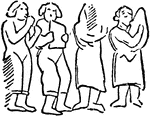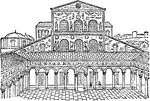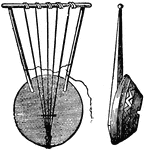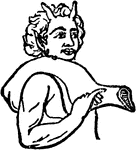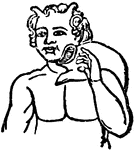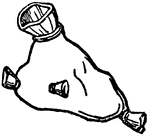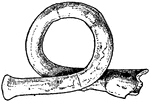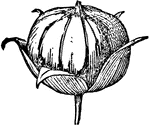
Roman Baths
"The baths of Titus, the name of each part of the building is inscribed on it. The small dome inscribed…
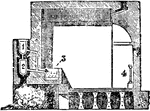
Tusculum Bath
"Section of the Bath discovered at Tusculum, showing the calidarium (hot room)." — Encyclopedia…

Brioude Bridge
"The old bridge of Brioude across the Allier in France. Montfaucon and Seguin speak of this as a Roman…

Beni Hassan
"Among the figures painted in the very ancient tomb at Beni Hassan, in Egypt, occurs a group of figures…
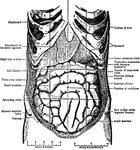
Abdomen
"The Abdominal Viscera in situ, as seen when the abdomin is laid open and the great omentum…

Medieval Amice
Three examples of the medieval method of putting on the amice. The amice is a liturgical vestment used…

Interior of Trajan's Bascilica
"Interior view of Trajan's Basilica, as restored by Canina." — Encyclopediia Britannica, 1910

Basilica of Old St Peter
"Sectional view of the old Basilica of St. Peter, before its destruction in the 16th century." —…
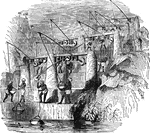
Shadoof
An irrigation tool invented by the people of ancient Sumer. It uses weights to make lifting buckets…

Angel
"An ancient English gold coin, varying in value. It was so called from the figure of the archangel Michael…
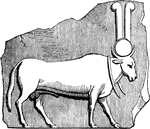
Apis
"The bull worshipped by the ancient Egyptians, who regarded it as a symbol of Osiris, the god of the…
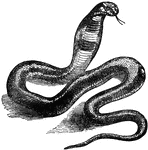
Asp
"A venomous serpent, the name of which has come down from ancient times; the vague descriptions of ancient…

Roman Bath
"Roman Bath, from a Painting on the Walls of the Thermae of Titus at Rome." — Chambers' Encyclopedia,…

Dalmatic
"The deacon's robe, in the Roman Catholic Church. the most ancient form of the dalmatic is exhibited…

Denarius
"Denarius of the earliest kind: Having on the obverse a personification of Rome as a warrior with helmet;…

Roman Eagle
"Eagle, as a military standard, was adopted by the Romans, and even by nations preceding them in history.…

Arterial System
"Diagram of the arterial system of A, Scorpio, and B, Limulus. The Roman numerals indicate the body…

Armilla
"Armillary Sphere, an instrument used in astronomy. In its simplest form, consisting of a ring fixed…
Aulos
"Roman Ivory Aulos found at Pompeii, showing slides and rings." — The Encyclopedia Britannica,…
Double Pipes
"Ancient Greek Double Pipes. Elgin Collection, British Museum." — The Encyclopedia Britannica,…
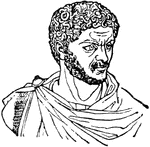
Caracalla
"Marcus Aurelius Antoninus, eldest son of the Emperor Severus, was born at Lyons A.D. 188; died in 217.…
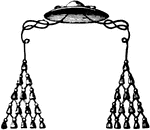
Cardinal Hat
"Cardinal, an ecclesiastical prince in the Roman Catholic Church, who has a voice in the conclave at…
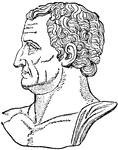
Nerva
"Nerva, the successor of Domitian, and one of the most virtuous of the Roman emperors. He was born in…

Obolus
"A small coin of ancient Greece, in later times of silver, the sixth part of an Attic drachma, equal…

Ivory Carving
"Leaf of a diptych, Roman, probably about 4th century, South Kensington Museum collection." —…

Praying Mantis
"Probably no other insect has been the subject of so many and widespread legends and superstitions as…
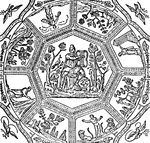
Vault
Painted vault from the Catacombs of St. Callixtus, Rome. In the centre Orpheus, to represent Christ…
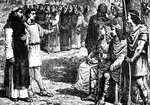
Augustine and Ethelbert
"Ethelbert met Augustine in the open air, under a tree at Canterbury, and heard him tell about the true…

Mary I
Mary, the fourth and penultimate monarch of the Tudor dynasty, is remembered for returning England from…
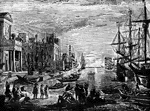
Seaport
This painting by Claude Gelle Le Lorrain happens to be one of the oldest etchings in oil. This painting…
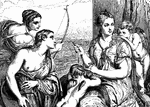
Cupid Equipped by Venus
This painting, by Tistian, is of a Roman story. The painting can now be found hanging in the Borghese…
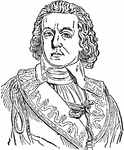
Comte de Barras
A French Jacobin, born in Province, in 1755, of an ancient family; served as second lieutenant in the…

Julius Caesar
(100 BC- 44 BC) A Roman military and political leader and one of the most influential men in world history.
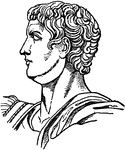
Caligula
Gaius Julius Caesar Augustus Germanicus, known as Caligula was the third Roman Emperor and a member…
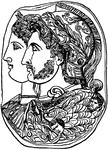
Cameo
Cameo, a term applied to gems of different colors sculptured in relief. The art of engraving on gems…


